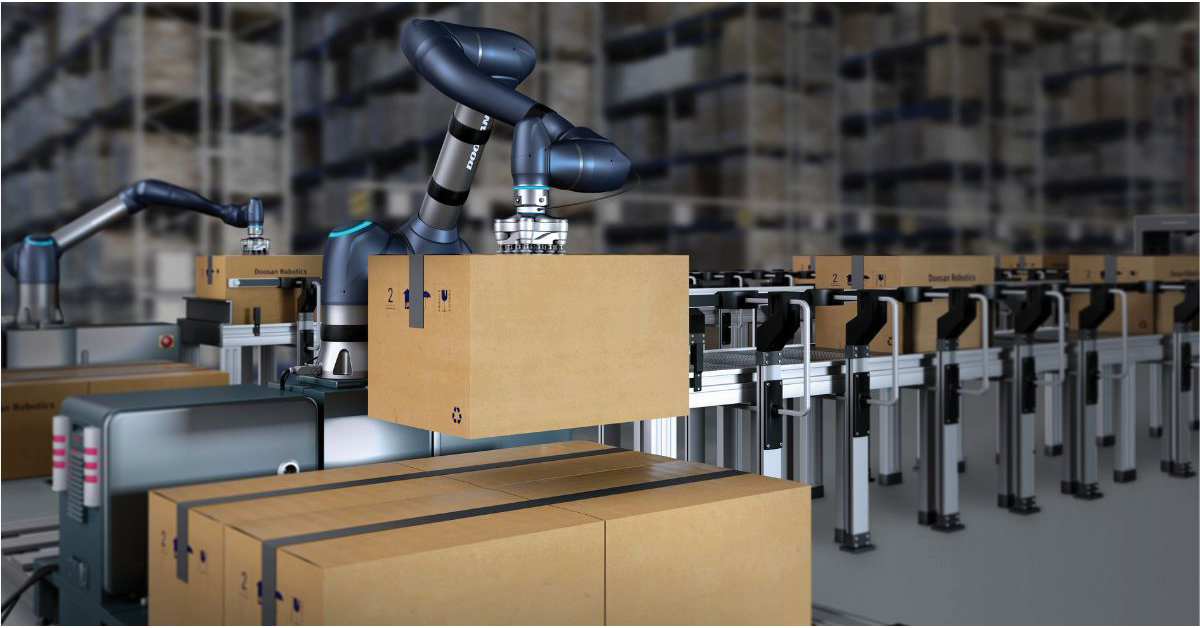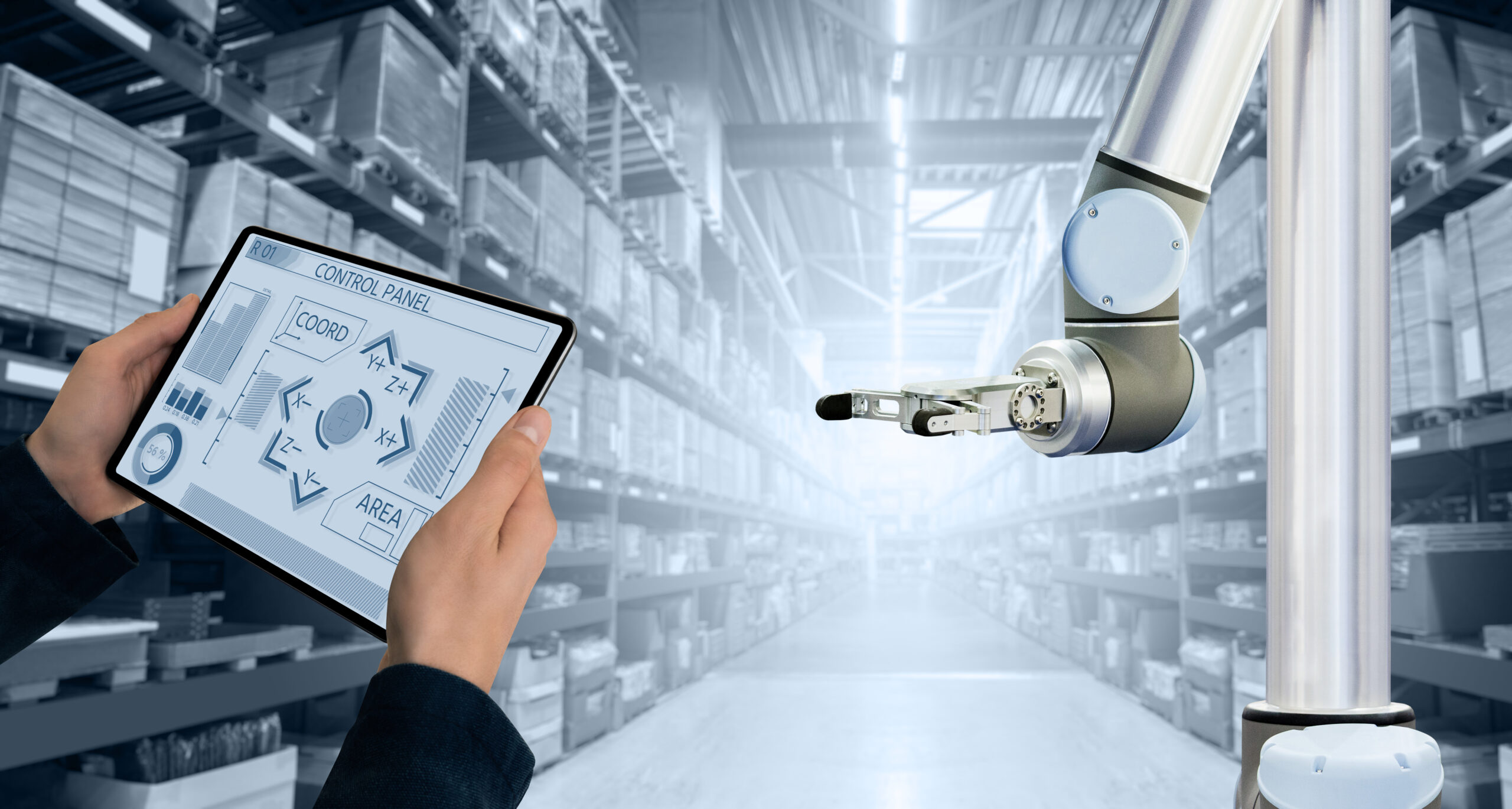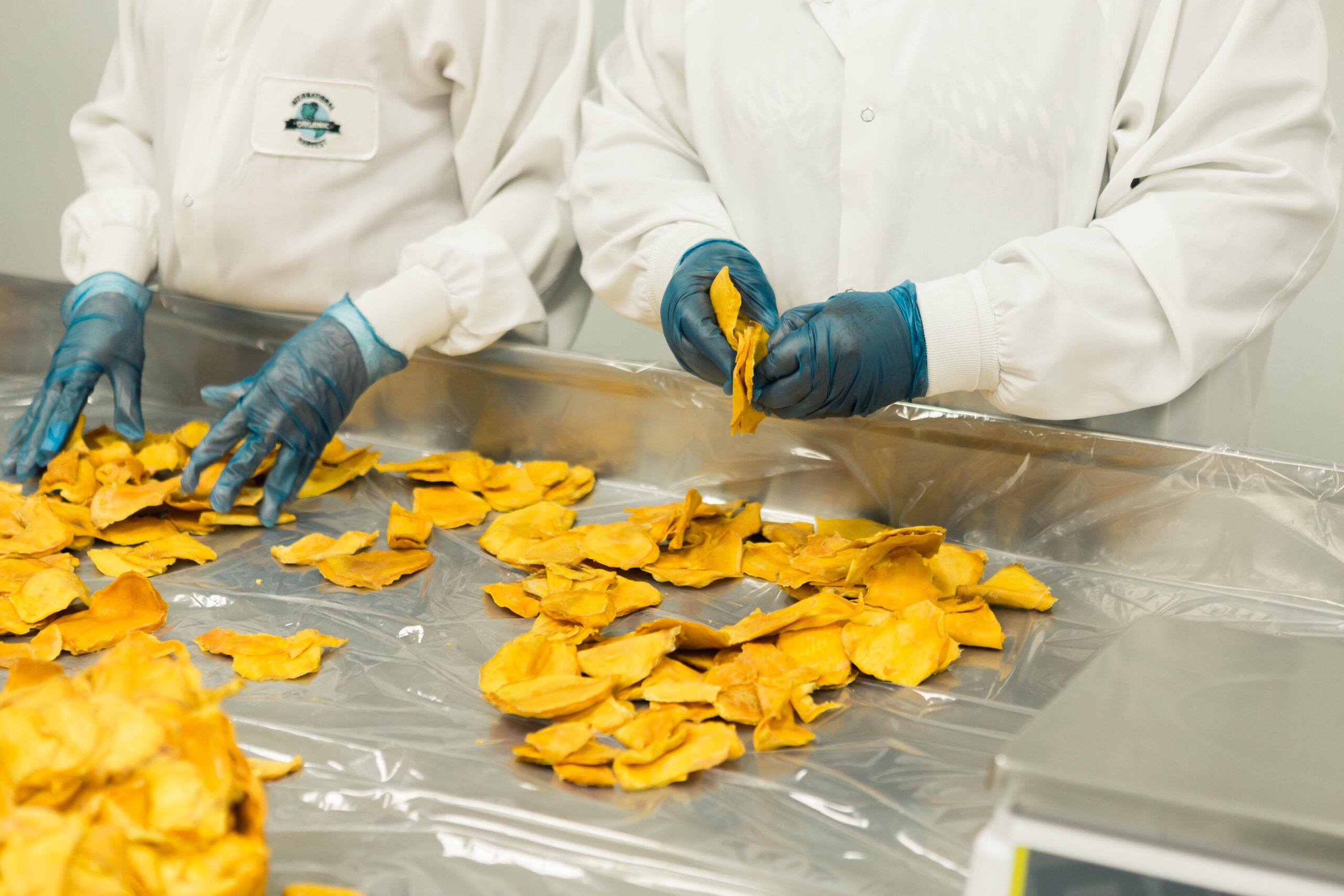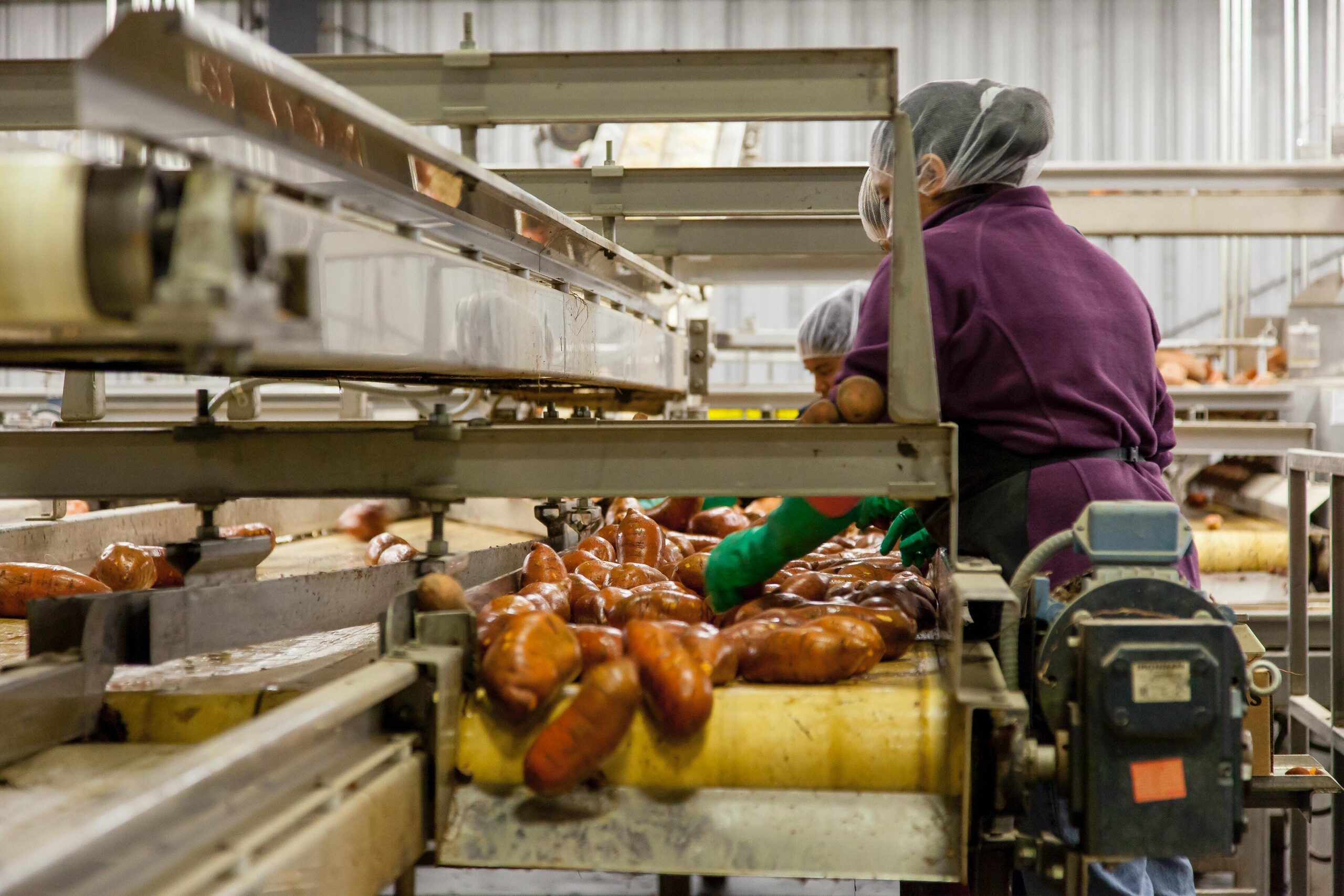

Robots vs Cobots, what's the main difference? Technology constantly continues to advance. We've been dreaming about robots ever since the first examples of science fiction in literature and cinematography. We expected many things from robots, yet the future that we had in mind didn't turn out to be as gruesome as we guessed it would be. One of the best examples of this is the fact that robotics play a crucial role in industrial operations and constantly change and influence the way companies and factories operate. Today, businesses use robotics differently – from industrial and automated robots that perform tasks instead of employees to collaborative robots and robotic examples that help streamline business processes and work alongside humans.But what are the main differences between these two, and what are the benefits of the latter?
Industry 4.0 / Robotics
Before we get into the differences between a robot and a cobot, it is essential to understand what industry 4.0 is and how it has changed the business world. Also known as the Fourth Industrial Revolution, 4.0 is the new phase of the industrial revolution that heavily relies on interconnectivity, automation, machine learning and real-time data. Thanks to industry 4.0, we witness improved productivity and efficiency, flexibility and agility, better customer experience, reduced costs, and higher revenues. Thanks to the technologies this industrial revolution introduced, all product lines, business processes, and departments can easily intercommunicate regardless of the location or time zone.Apart from the augmented reality perceived as the most "meta "feature of this industry, we witnessed the arrival and broader implementation of robots and cobots in manufacturing.
What are cobots?
The easiest way to understand the difference between robots and cobots is by understanding how self-sufficient they are. Namely, typical robots work independently and fully take over a given task, meaning that employees do not have to help them. Cobots, on the other hand, are collaborative robots, hence the name. They work alongside people, not instead of them. Their main job is to create a hybrid work environment that doesn't affect the workforce but improves efficiency and safety across all industries and through different tasks. The three areas in which cobots help are:
- Assistance – Some tasks can be too complicated for robots to perform alone, regardless of their independence. Cobots assist people in speeding up the tasks, streamlining the operations and taking over the monotonous and tedious work while leaving the more exciting part of the task to the humans.
- Seamlessness - Safety and efficiency are two of the most important features of cobots. Working with cobots is seamless; they work closely with humans and can be near workers without danger.
- Adaptability - Adapting a cobot is effortless. Cobots are easily programmable and can work in almost all industries that involve manufacturing, performing any task a human worker perceives as time-consuming.
Robots vs Cobots: Key differences between cobots and robots
|
ROBOTS
|
COBOTS
|
Robots are a costly investment. On top of that, the system integration and operation training costs even more, which means it takes longer for ROI. |
Due to the competitive pricing, in-house integration, and ease of use, cobots minimize the upfront cost, resulting in a faster ROI . There is also no need for additional equipment. |
Robots require extensive programming skills, and the deployment can take up to several days or weeks. |
Programming a cobot is fast and easy. Simple setups can take up to several minutes. |
Robots are usually programmed for stable and unchanging environments with the same movements as there is a minimal need to adapt to changes. |
Due to the ease of deployment, cobots are flexible to adapt to the changing business environment. Their tools easily adapt to different shapes, sizes and conditions of the workplace or environment. |
Robots almost always require safety guarding. In most cases, human workers are kept out of the robot's work cell. |
Cobots are collaborative and can work alongside people. The interaction with humans is simplified. |
The robot repeats the same actions throughout the years. This is because the unchanging tool is integrated for a specific process and is rarely changed. |
In order to increase utilization, the focus of the cobot is shifted to EOAT (End of Arm Technology). They represent a flexible tool that can be used for multiple processes. |
Cobot benefits
As already seen, there are significant differences between traditional robots and cobots. Although the general idea of ??a robot working for you sounds intriguing, cobots have plenty of benefits over conventional robots:
Collaboration with humans
What is important to understand is that a cobot works more like a partner rather than a fully autonomous robot who can perform different tasks instead of a worker. While robots can perform any task, the cobot is there to help workers out and complete any complex or dull tasks. The benefit of a cobot is its intelligence and the ability to learn a lot about its environment and dynamic surroundings, which makes collaborating with human workers easier.
Ease of use
Programming a traditional robot is a challenging task, and it cannot be done by just anyone. Only people who understand the industry and are programming experts can make a robot perform the designated tasks. On the other hand, the situation with cobots is entirely different. They are made to work with all humans, not only programming experts, and because of that, they are straightforward to use.
Any employee will be able to operate a cobot, regardless of how much technical experience they have. What's more, employees can also "train" robots and show them what they have to do by simply manipulating their arms and walking them through the process. The cobot then replicates the steps.
Easy programmable
Apart from being easy to train and use, cobots are very easy to program as well. This doesn't require any advanced programming skills, but the employees can reprogram the cobot anytime by simply showing what it has to do.
Stability in the production environment
Another benefit of using a cobot is the consistent quality this product brings. Cobots are programmed to perform tasks in a certain way, meaning that they will always perform them precisely the same, thus boosting the quality of the final product. Cobots do not depend on human mood, and their performance leads to the same results every single time.
Versatility and functionality
Cobots shouldn't be pinned down to just one intended task. The truth is that they can perform a wide range of jobs and even combinations of them. This includes assembly, pick-and-place and welding, among others. They can stay at one spot and help with repetitive and dull tasks, but they can also move freely around the facility and perform different tasks. It is also important to mention that different cobot models are best used for different tasks and industries. Some models are intended for repetitive tasks at very high speeds, while others are best for heavy object handling or multitasking and long-range use.
fast setup
Unlike the setup for traditional robots, which is a long process, the setup for a cobot takes only a few hours. They are put onto different surfaces and are moved through the facility in order for them to memorize the route. The fast reprogramming can make the cobot move as much or as little as needed.
Increased Safety
One of the most important benefits of cobots, which separates cobots from traditional robots, is their safety. Traditional robots are autonomous, and they tend to be isolated and kept separated from workers due to safety reasons. Cobots, on the other hand, are ideal for use in close contact . This is so because of their design – they have smooth, rounded edges and advanced sensors. Cobots can identify if people are close and can stop performing if someone gets in their way.
Increased productivity
The main goal of robotization is to optimize a process, achieving the goal with minimal costs and effort. With cobots, errors are minimized as employees have time for other things and tasks they actually like performing. On top of that, the cobot comes with the typical benefits that one can expect from a robot. They don't get tired or hungry, which means they can be used 24/7, significantly boosting productivity.
Cost-effective
Although a cobot is a significant investment, it will pay off in a short period of time. The ROI time depends on the actual task the cobot is programmed to perform, but one can return the investment in several months. Due to the fact that they can perform the tasks in all three shifts and increase productivity, employees will be able to move on to other tasks without worrying that a cobot will miss a task or perform it poorly.
Creates more opportunities for remote and creative work
The hybrid work model has been popular for quite some time now, but it has boomed since the COVID-19 pandemic. Nowadays, more and more companies opt for this work model, giving their employees the chance to work from home and the office. As a result, this can improve their mental and physical health, which is one of the benefits of this work model. But this isn't functional for people who are in charge of completing manual tasks. Cobots can change this, as they can always perform the dull manual tasks people have been performing so far.
As a result, companies will be able to use their employees for more creative and complicated tasks and give them the option of the hybrid work model if that is something they are comfortable with.This means that cobots open new possibilities for current employees who want to take their careers in a different direction.
Conclusion
There is a misconception about cobots that they are here to replace workers, which is not the case. Cobots offer a wide range of benefits that traditional robots don't, and they represent an amazing way to improve the productivity of manufacturing while saving money in the long run. They are easier to program than robots, collaborate with the employees and represent a fantastic example of technological advancements. In case you need more information, you can always book a demo with the Cobotx team and they will be more than willing to show you why your business needs a cobot.




